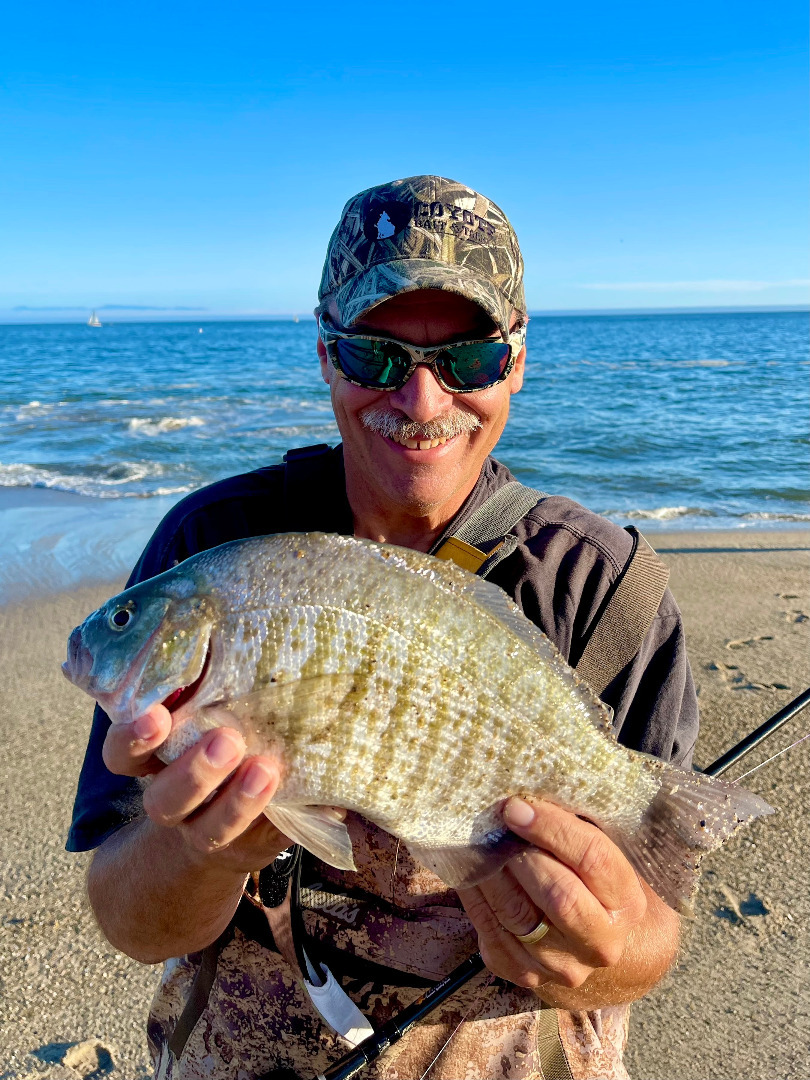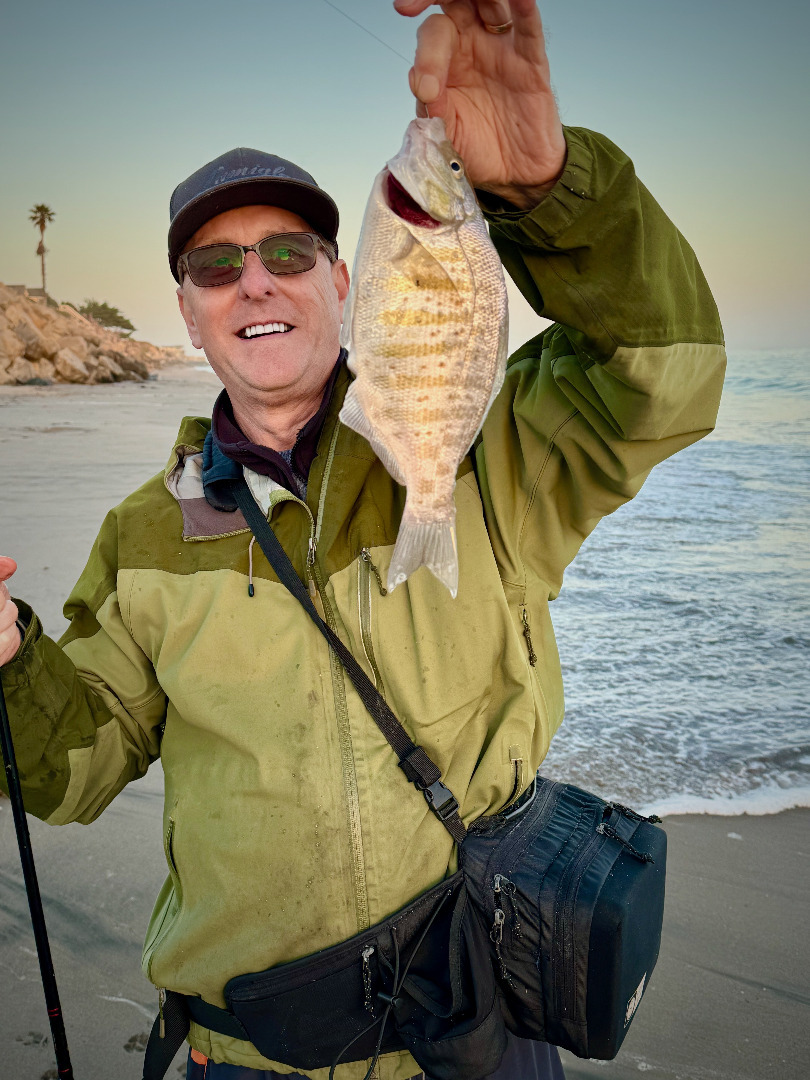From Sportfishing
Fish Report for 8-2-2024

Best bait, lures for surfcasting success
8-2-2024
Allen Bushnell
Summertime is high season for surfcasters, though this enjoyable and accessible type of fishing can be practiced year-round in the states of California. Previous columns have looked at the type of surfline conditions that can be beneficial for surfcasters as well as basic equipment details. Good baits to use include natural foods such as sandcrabs, shrimp or mussel meat. Very popular these days is an artificial bait that resembles natural sand worms or “nereis.” GULP! puts out a moist and worm product packaged in sealable bags that are biodegradable, and carry a scent for attraction. Most surfcasters thread the worm onto the hook to present a straight appearance along the shank of the hook.They are available up to six inches long, but most surfcasters use the two-inch models.
Similar to the sandworms but fished more like a lure with a slow constant retrieve, are a wide variety of of grubs in both paddle tail and curly tail designs. Baits can be very effective with a super-slow retrieve, basically just keeping slack out of the mainline and letting the currents push the bait around in a natural motion. Grubs are most effective when moving. The little tails wiggle as the grub is being retrieved. With baits, setting the hook is often the best route to snag that fish, but for grubs keeping it moving and basically “reeling the hooks” is most effective. Grubs are acting more as a tiny lure than they are as a bait.
As for lures, there are hundreds of varieties to choose from that can be effective in our local waters of Monterey Bay. Stick baits are a generally fish-shaped hard lure. Most are designed to dive as they are pulled in. Some dive deeper than others. The Lucky Craft lures are very popular lately, especially in the sardine coloration or white with a pink bottom. Available in the 110-115mm lengths these lures are still small enough to elicit hits from perch, but big enough to attract the attention of larger game such as striped bass or halibut.
Large stick baits may not catch many perch, but are a “go-to” for our bass anglers. Again available in a wide range of coloration, some of the most popular models include the Daiwa Salt Pro (SP) Minnows, Joe Biggs Swarters, Yo-Zuri minnows and the time-tested Rapala stickbaits. Every model has different features such as how deep it dives on retrieve or whether it floats or sinks when the retrieve is halted. All share the commonality of a jerky side to side swimming motion to fool the fish into mistaking it for a real baitfish. The models and techniques to best use them are far too numerous and complex to cover in this column, but we’d recommend experimenting with different retrieval speeds, stopping and restarting the retrieve and trying the occasional twitch or heavy pull on the rod to vary the action.
For stripers specifically, many anglers prefer topwater lures. Most common are the poppers. Designed to wiggle like a wounded baitfish on the surface of the water, poppers are designed to push water in the front, creating a splashing attraction for the predator fish. This often provides explosive results as bass break the surface to attack from the back, sides and even from in front of the lure. A good day fishing with poppers provides an extra measure of excitement and great visuals. You can actually watch the fish hitting your lure. On all these bigger “hard” lures, it’s usually best to keep reeling to get your strikes. Maybe slow down a little so as not to pull the lure out of sight from the fish, but like grub fishing you’re most often hooking the fish by reeling rather than by pulling. Once you feel the weight of the fish on the hook, pulling up to put a strong bend in the rod can seal the deal.
< Previous Report Next Report >

Website Hosting and Design provided by TECK.net

